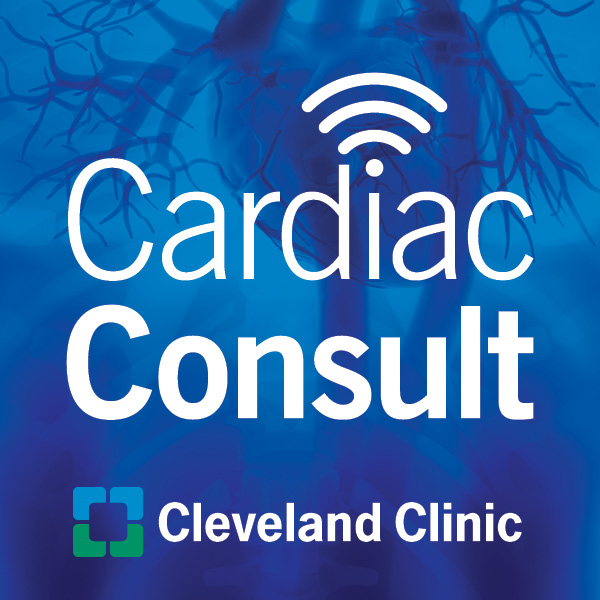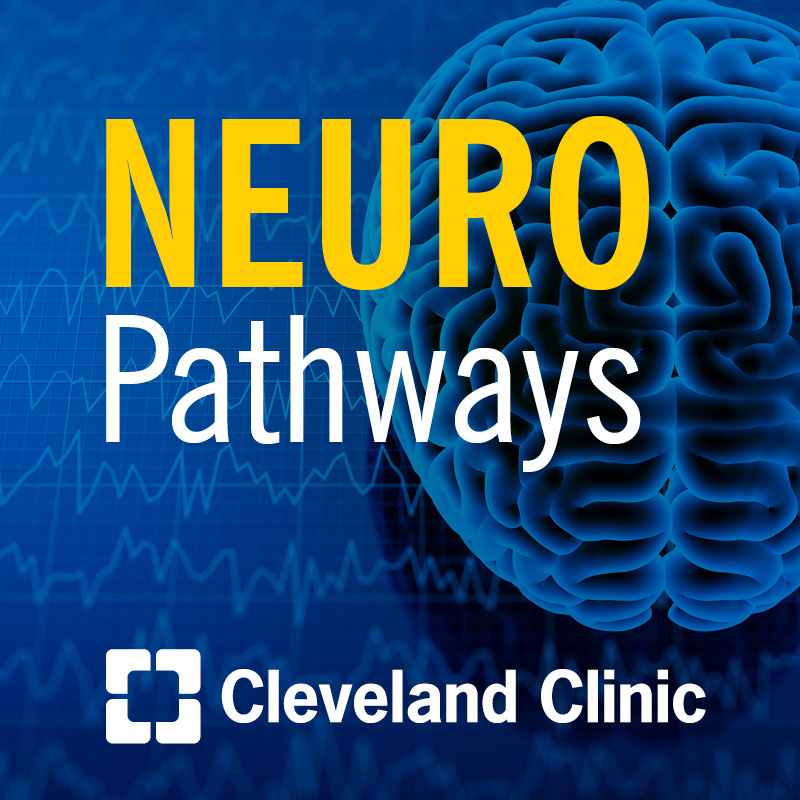Talking Tall Rounds®: Novel Advances in the Treatment of Aortitis

Dr. Sagar Kalahasti provides an overview of novel advances in the treatment of aortitis.
Enjoy the full Tall Rounds® & earn free CME
- Case Presentation: Heidi Reich, MD
- Pathophysiology and Classification of Aortitis: Carmela Tan, MD
- Imaging Features to Diagnose Inflammatory Disease of the Aorta: Paul Schoenhagen, MD
- Cardiac Manifestations of GCA and Takayasu Arteritis: Sagar Kalahasti, MD
- Clinical Features and New Treatments of GCA, Takayasu and Isolated Focal Aortitis: Carol Langford, MD
- Arch/Visceral Branch Involvement: Jarrad Rowse, MD
- Surgical Considerations in Treating Aortitis: Eric Roselli, MD
Subscribe: Apple Podcasts | Podcast Addict | Buzzsprout | Spotify
Talking Tall Rounds®: Novel Advances in the Treatment of Aortitis
Podcast Transcript
Announcer:
Welcome to the Talking Tall Rounds series, brought to you by the Sydell and Arnold Miller Family Heart, Vascular & Thoracic Institute at Cleveland Clinic.
Sagar Kalahasti, MD:
Good morning, everybody. Today, we welcome you back to another edition of the Heart, Vascular & Thoracic Institute Tall Rounds. We have a wonderful topic to discuss in the next hour or so. Today's topic is novel advances in the treatment of aortitis, and we'll get started with a case presentation with Dr. Heidi Reich.
Heidi Reich, MD:
Good morning, and thank you for the opportunity to share this case of aortitis. Our patient is a 73-year-old woman who had a known aneurysm, who was referred to the Cleveland Clinic when over the course of the year, her ascending increased in diameter from 4.9 to 5.4 centimeters. On history, she endorsed a remote history of palpitations and angina that had been resolved with medical management. Her medical history and surgical history are summarized here. No significant family history. She was an active smoker at the time she was sent to our Clinic, and she had an unremarkable physical exam. We repeated her CT scan when she arrived at the Cleveland Clinic. And you can see here that she has a large ascending aortic aneurysm. By our measurements, it was now 5.6 centimeters. Her arch and her descending were also aneurysmal at five centimeters, and there was a significant amount of thrombus present in the descending aorta.
Heidi Reich, MD:
Her preoperative workup included a left heart cath and an aortogram. You can see again, a large ascending aortic aneurysm, and she had single-vessel coronary artery disease with a 50% PDA lesion. Prior to her surgical procedure, we performed an intraoperative TEE, which confirmed that she had preserved biventricular function, a trileaflet aortic valve that was competent. We planned to take a two-stage surgical approach to her pathology. And for her first stage, we performed an ascending aortic replacement and a total arch repair with a frozen elephant trunk procedure. We performed an on-table fenestration of her stent graft and placed stents in both the left subclavian and left carotid arteries, and separately, re-implanted the innominate artery. The case went well. She recovered well. And we sent her home with instructions to return to our clinic in three months for a second stage.
Heidi Reich, MD:
Our approach to the second portion of her procedure was completely endovascular. We performed an endovascular extension of her elephant trunk using overlapping stents via percutaneous access through the groin. She tolerated the procedure well. And we performed a post-procedural CT scan, which you can see here. And it confirmed that there was no endoleak. And we sent her home in excellent condition on post-op day 11. Thank you.
Sagar Kalahasti, MD:
So as Dr. Tan has already mentioned, the classification of aortitis now falls under the broad categories of inflammatory versus infectious aortitis. If you look at the inflammatory aortitis, there are large vessel vasculitis and other vasculitides. For our focus today, would be on talking about GCA and Takayasu arteritis. Just as Dr. Tan had mentioned, there are many other conditions that can lead to aortitis, including sarcoidosis, as well as isolated aortitis and chronic periaortitis. And of course, the infectious aortitis that is predominantly caused by bacterial infections, primarily reported in the literature, salmonella species, staph species, streptococcus pneumoniae and syphilitic aneurysms are very rare at this time. Mycobacterial, again, is not very commonly seen in the US, but those are the infectious aortitis to be kept in mind.
Sagar Kalahasti, MD:
So in general, if you look at the clinical presentation of aortitis or vasculitides, many different abnormalities are reported in the literature. Primarily, aneurysmal disease is what we see in the cardiovascular side, with thoracic or abdominal aortic aneurysm. Other specific features that are seen in patients with aortitis is aortic insufficiency, either acute or chronic aortic insufficiency, stable angina pectoris or presentation with an acute coronary syndrome caused by coronary involvement, primarily, I would say with aortic inflammation. Aortic thrombosis with distal embolization as well as aortic dissection, in general, tends to be rare complications, but more commonly, you may see patients with upper and or lower extremity claudication with pulse deficits or hypertension in a young patient, such as in Takayasu arteritis. As Dr. Tan mentioned about, renal artery involvement in patients, particularly with abdominally aortic, Takayasu involvement can lead to hypertension in a young patient.
Sagar Kalahasti, MD:
So these are the ACR criteria for Takayasu arteritis. If you look at multiple of these criteria, so I'll highlight some of the major ones, age of onset, typically less than 40 years, claudication of extremities decreased brachial artery pulse or blood pressure difference between the arms, bruit or arteriogram abnormality. So more than three are equal to three criteria is consistent with the diagnosis of Takayasu arteritis with the sensitivity of 91% and a specificity of 98%. Keep in mind, there is no mention here about the cardiac manifestations of the disease, such as aneurysmal disease or coronary involvement or valve involvement.
Sagar Kalahasti, MD:
So if you look at the overall major takeaways in Takayasu arteritis is primarily, it's an arterial occlusive disease, much more commonly that affects the aortic arch and the large vessels. Abdominal aortic involvement is reportedly more common in the literature followed by descending thoracic aorta, as well as the aortic arch. Stenotic lesions are much more are commonly seen. And aneurysm formation is reported in about 45% of the cases. So 40% of patients do have cardiac manifestations with Takayasu arteritis, most common ones being angina pectoris, acute MI, aortic valve regurgitation.
Sagar Kalahasti, MD:
This is primarily due to aortic valve or aortic inflammation that tends to lead to involvement of the aortic valve cusps and coronary arteries. Pulmonary artery involvement has also been reported, although large pulmonary aneurysms have not been described frequently.
Sagar Kalahasti, MD:
So there are many different type types of Takayasu involvement based on angiography. And this has been presented or based on the international Takayasu arteritis conference, talking about the different patterns, and the disease actively can predict what forms of Takayasu manifestations are commonly seen. In general, angiographically, type four was the most common, followed by the other types, going from two, one, four, and three.
Sagar Kalahasti, MD:
So to summarize some of these findings, I have a case presentation of a patient with Takayasu arteritis. This is a 51-year-old female with a diagnosed Takayasu arteritis who presented to the cardiology clinic with shortness of breath in exertion and dizziness with exercise. And I'll show you her MRI and echocardiogram. And based on that, she was recommended elective aortic valve replacement. So this is her MRI, and I can slow down here and show you some very similar findings that Paul had described with the circumferential thickening of the ascending aorta. And not a significant aneurysm formation, but that's commonly seen in patients with Takayasu's. So this is her echocardiogram showing aortic valve regurgitation in the parasternal long-axis and apical five-chamber and three-chamber views. And she has significant aortic regurgitation based on the color flow reversal in the descending thoracic aorta.
Sagar Kalahasti, MD:
So as you can see, she had a transesophageal echocardiogram that shows significant involvement of the aortic valve cusps with restriction of the leaflets and failure of palpation leading to significant aortic valve regurgitation. And you can see it extends into the sinotubular junction, as well as the proximal ascending aorta. So interestingly, she did not have any prior history of having angina, but as part of the preoperative coronary assessment, she underwent a coronary angiogram. And as you can see, she has complete occlusion of the left main coronary artery. And if you look at the right coronary artery, she has a very large right coronary artery that is essentially providing all of the flow to the left circulation.
Sagar Kalahasti, MD:
So this was detected on preoperative coronary angiograms. As you can see, this case describes all of the manifestations that you typically see in a patient with Takayasu's. So she underwent a bypass graft and aortic valve replacement, and the pathology of the, excuse me, showed the semilunar valve with moderate cusp edge fibrosis likely related to healed arteritis. So this is another example of a patient who had infrarenal involvement of the Takayasu arteritis. You can see the aorta is completely occluded here, and this patient underwent an aortic bypass graft so she could have perfusion to the distal extremities and also to the visceral branch vessels.
Sagar Kalahasti, MD:
So let's switch gears, in the next few minutes, to giant cell arteritis. And what are the criteria for giant cell arteritis? Typically the age of onset is more than or equal to 50 years. The new headache with this association with temporal arteritis, with a temporal artery abnormality and elevated SED rate and abnormal arterial biopsy. And again, more than equal to three criteria is consistent with the diagnosis of GCA with a sensitivity of 94% and a specificity of 91%. Again, just like Takayasu arteritis, we don't have any diagnostic criteria that includes aneurysmal disease or occlusive disease of the aorta or coronary or valve involvement.
Sagar Kalahasti, MD:
So in general, the manifestations are thoracic aortic aneurysms with coronary artery disease described in general about a median of 5.8 years after diagnosis, typically they're seen. More than half of the patients died of acute aortic dissection, arm or leg claudication caused by occlusive disease that involves the aortic heart branch vessels have also been described. In general, one of the predictors of disease from a clinical standpoint is aortic regurgitation and diagnosis, concurrent hyperlipidemia, and coronary artery disease.
Sagar Kalahasti, MD:
So to illustrate at some of the manifestations of giant cell arteritis, we have one other case here. It's a 61-year-old female, history of hypertension and hyperlipidemia. 2011, she presented with chest pain and non-ST segment elevation myocardial infarction, and she underwent cardiac catheterization. And this shows a clear example of significant left main stenosis. As you can see here, significant left main stenosis, and she was admitted to the... she subsequently was recommended to undergo coronary artery bypass grafting, which was done in 2011. At that time, she had normal left ventricular function with mild aortic valve regurgitation and upper normal ascending aortic dimensions of 3.8 centimeters. So this was the echocardiogram that was in subsequently during follow up in 2015 that showed that the aortic valve cusps look a little bit more thickened now and she has much more aortic regurgitation, and the ascending aorta is now dilated up to 4.3 centimeters.
Sagar Kalahasti, MD:
So she presented in 2018 with worsening shortness of breath, and an echocardiogram was repeated at that time. Now she had developed significant aortic valve regurgitation with the left ventricle dilated by volumes. So because of symptoms, she underwent a stress echocardiogram that showed that her left ventricle did not augment as well with exercise compared to her resting images. Based on that, she was recommended to undergo aortic valve replacement. So for preoperative planning, she underwent a CTA, and this actually demonstrated most of the findings that you'd typically see with ascending aortic involvement and diffuse thickening of the descending aorta. And as you get to the abdominal aorta, you begin to see that she actually has a visceral branch, severe stenosis, like involving the celiac artery, and mild circumferential thickening around the abdominal aorta, raising the suspicion that, all along, this patient may have had vasculitis.
Sagar Kalahasti, MD:
So subsequently, she underwent coronary angiography that showed patent grafts from 2011. She ended underwent an aortic valve replacement and ascending aortic replacement with a Gelweave graft, and surgical pathology now revealed that she giant cell arteritis. So rheumatology was consulted and she was treated with steroids and currently is in remission.
Sagar Kalahasti, MD:
So take-home points from those two cases and the criteria, Takayasu and giant cell arteritis are uncommon forms of arteritis, and aneurysmal diseases seem much more commonly with GCA and occlusive disease is a little bit more commonly seen with Takayasu arteritis. Branch occlusive disease is more common in Takayasu arteritis, and aortic valve regurgitation appears more common with valve or a lesion in the Takayasu's compared to giant cell arteritis. And pulmonary artery disease primarily appears to be related to aortic inflammation involving the coronary ostia.
Announcer:
Thank you for listening. We hope you enjoyed the podcast. Like what you heard? Visit Tall Rounds online at clevelandclinic.org/tallrounds and subscribe for free access to more education on the go.

Cardiac Consult
A Cleveland Clinic podcast exploring heart, vascular and thoracic topics of interest to healthcare providers: medical and surgical treatments, diagnostic testing, medical conditions, and research, technology and practice issues.



